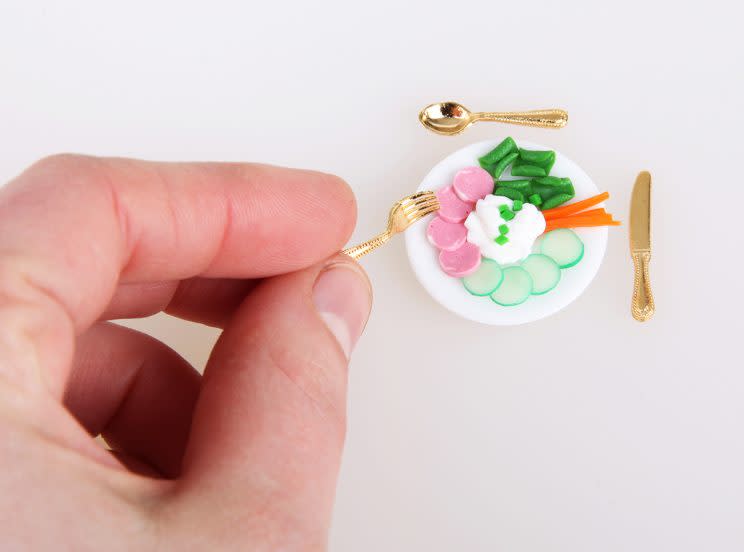What’s the Teaspoon Diet, and Does It Work?

The past year presented us with countless crazy diet trends without much evidence to back them up. From the mono diet, (which allows participants to eat only one type of fruit, based on the idea that people in tropical islands eat this way), to the taco cleanse, (a weeklong, completely taco-based diet based on the ‘health benefits’ of tortillas), the most popular diets of 2016 were pretty outrageous.
Now, 2017 is proving that crazy diets are not going away: One woman recently opened up about her dramatic weight loss using the Teaspoon Diet, in which she measures out her portions and eats with a teaspoon.
Mathilde Broberg dropped nearly half her body weight with the method, starting at 268 pounds and nibbling her way down to 125 pounds over the course of two-and-a-half years. Following her weight loss, the 21-year-old is now a personal trainer and a sportswear model.
“Firstly, my portions are around the size of a flat-out hand. I made sure my portions were no bigger than that. It stopped me piling-up a food mountain on my plate like before,” Broberg, who estimates that she used to eat 3,500 calories a day, told the Daily Mail.
“I also started eating with a teaspoon rather than a tablespoon; that way, I was feeling full quicker. By eating with a teaspoon, it tricked my brain into thinking I was consuming way more than I really was. It worked well for me.”
She also cut junk food out of her diet. “I quit chips, candy, cake, bread, and pasta, as well as using a couple of great tricks to combat my greediness.”
A photo posted by Mathilde H. Broberg ?? 139lbs (@mathildehbroberg) on Dec 6, 2016 at 2:33pm PST
At 5’9”, Mathilde was at the upper end of the obesity spectrum at her highest weight, and she qualified as underweight at her lowest. She had been obese since childhood, and after spending two and a half years committed to losing weight, she feared weight gain and developed what seems to have been problematic eating behavior, saying that she always wanted a model body. She admits she was often hungry during her weight-loss process and says she worked out “way too much.”
Mathilde has since put on 24 pounds of muscle and fat, but based on her daily food log, she continues to heavily restrict her portions, eating little more than 1000 calories per day.
Shira Lenchewski, MS, RD, a Los Angeles-based celebrity nutritionist, raised some pretty big red flags about this worrisome diet. “My food philosophy is pretty simple: food is nourishment and pleasure. I honestly don’t believe you can live a happy, healthy life without both.
And you shouldn’t have to choose. Part of achieving that balance involves getting in touch with your internal hunger and satiety cues (which we all have BTW),” she shared.
Eating mindfully can be the best way to nourish your body. Your brain takes 20 minutes to register the food in your stomach.
And the palm of your hand can be used as a measuring tool for portion control; however, it is crucial to be sure you are getting enough calories and listening to the signals your body is sending you.
“The problem for many of us is that we can’t always pick up on those signals. So, although sensible portion control and dialing back on sweets and simple carbs can certainly be helpful,” Lenchewski explains, “I would definitely caution against any type of extreme plan, especially one that promises to “trick” those internal signals, which we really want to be on point.”
Let’s keep in touch! Follow Yahoo Beauty on Facebook, Twitter, Instagram, and Pinterest.
READ MORE:
The 38 Best Diets of 2017
A Woman Is Letting Her Plastic Surgeon Document Her Tummy Tuck on Snapchat
Oprah Says Giving Up This 1 Thing Is What Helped Her Lose 42 Pounds
